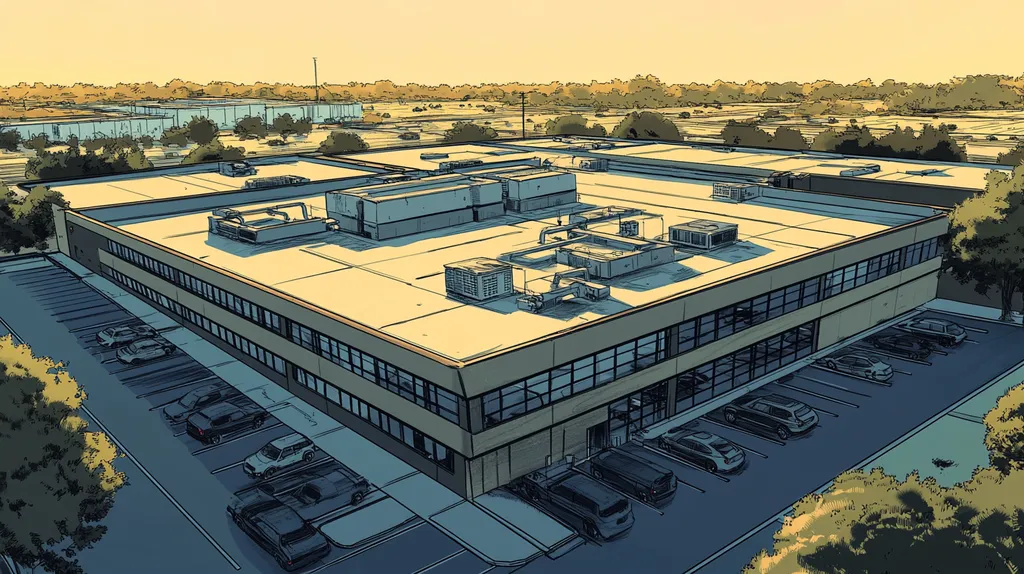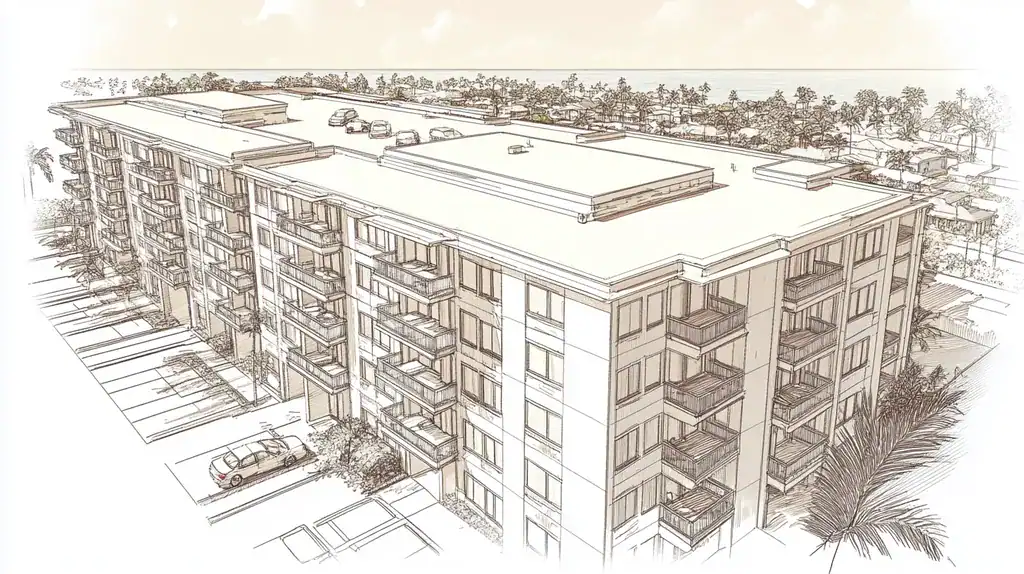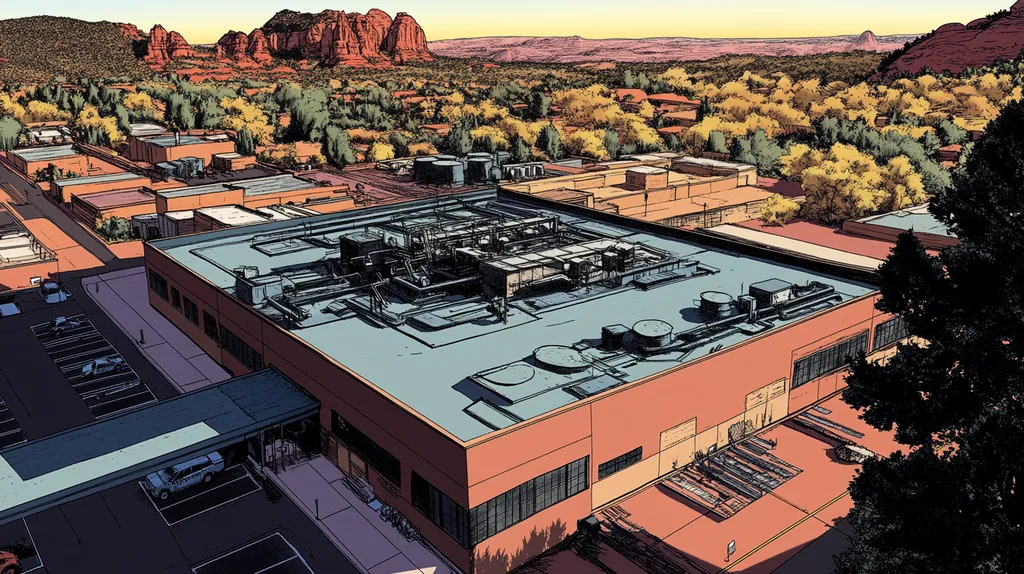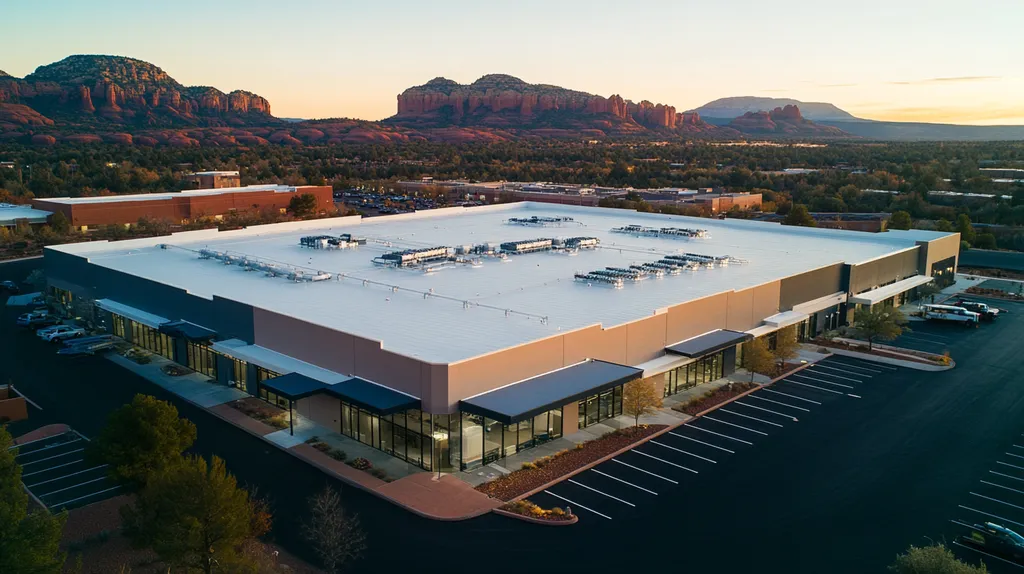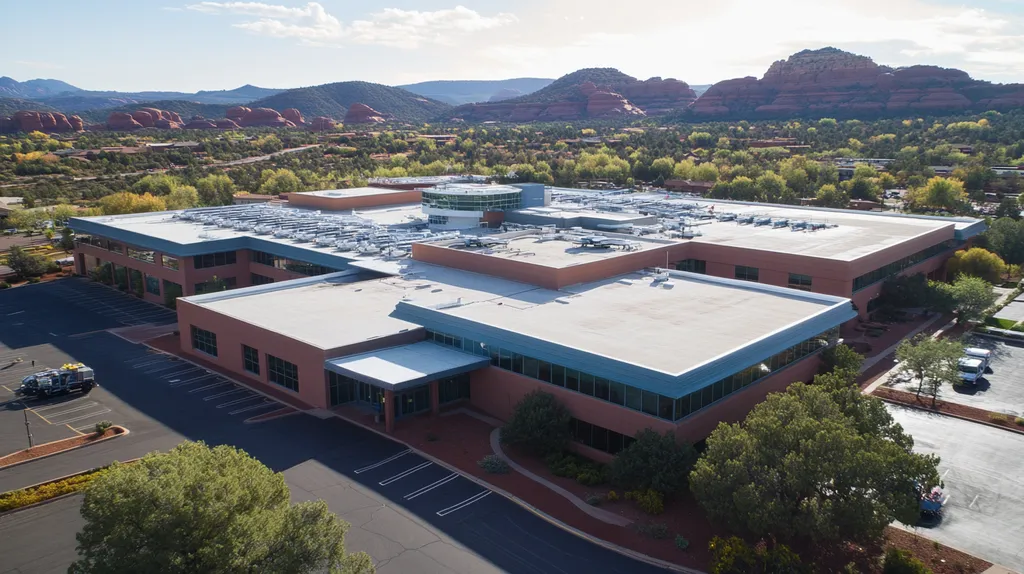Welcome to today’s Battle Royale featuring two roofing heavyweights: “TPO” in the east corner versus “PVC” in the west!
Tonight’s showdown pits these contenders against each other across six punishing rounds designed to test every aspect of their performance for Commercial Roof Climate and Use.
At stake? Millions in potential costs, decades of building protection, and the critical performance demands of modern commercial and industrial facilities.
Our professional judging panel will evaluate each round on technical merit, real-world performance, and value delivery. After all six rounds, we’ll declare our ultimate champion.
Ladies and gentlemen, facility managers and building owners… it’s time to rumble!
ROUND 1: INITIAL COSTS & INSTALLATION
When selecting a commercial roofing system, the initial investment and installation process can impact both immediate budgets and long-term facility operations. Every day of installation means potential disruption to business operations, while material choices affect not just upfront costs but also installation complexity and timeline considerations.
Material Expenses
TPO roofing systems have traditionally offered a more economical entry point for commercial property owners, with material costs typically ranging 15-25% lower than comparable alternatives. The affordability factor makes TPO particularly attractive for large-scale commercial projects where material costs can quickly escalate.
PVC roofing materials command a premium price point due to their advanced formulation and enhanced durability characteristics. While the higher material cost reflects PVC’s superior chemical resistance and longevity, it can significantly impact initial project budgets.
Despite PVC’s performance advantages, TPO’s competitive pricing gives it a clear ADVANTAGE in material expenses, particularly for budget-conscious projects.
Installation Complexity
TPO installation benefits from relatively straightforward procedures and lighter weight materials that reduce handling complexity. The material’s flexibility and weldability allow for efficient seaming and detail work, minimizing specialized labor requirements.
PVC installations demand more technical expertise and specialized equipment for proper seam welding and detail work. The additional complexity requires more skilled labor and careful quality control throughout the installation process.
The simpler installation requirements of TPO translate to reduced labor costs and fewer potential complications, giving it an ADVANTAGE in installation complexity.
Project Timeline
TPO roofing offers energy efficiency and UV resistance while maintaining relatively quick installation timeframes. The material’s easier handling characteristics and simpler installation requirements help keep projects on schedule. (source: 12 Stones Roofing)
PVC installations typically require more time due to their precise installation requirements and additional quality control measures. The extended timeline can impact facility operations and increase overall project costs.
Given its faster installation potential and minimal disruption to operations, TPO demonstrates an ADVANTAGE in project timeline considerations.
ROUND 1 WINNER: TPO
ROUND 2: DURABILITY & LIFESPAN
When commercial roofing systems fail, the consequences extend far beyond repair costs. A compromised roof can lead to inventory damage, equipment failures, and business interruptions that cost facilities hundreds of thousands in losses. Understanding how TPO and PVC membranes perform over time is crucial for protecting both assets and operations.
Resistance to Weather Elements
Weather exposure represents the primary threat to commercial roofing integrity. UV radiation, temperature cycling, and precipitation continuously test membrane strength and seam integrity.
TPO membranes excel at UV resistance and maintain flexibility across temperature extremes. However, their performance can degrade more quickly in areas with intense solar exposure or frequent temperature swings.
PVC roofing demonstrates superior resistance to environmental stressors, with proven durability in extreme conditions. Its enhanced chemical formulation and stronger seam welds provide better protection against water infiltration and wind uplift.
Given its consistent performance across diverse weather conditions, PVC claims the ADVANTAGE in weather resistance.
Impact on Energy Efficiency
Energy performance directly affects building operating costs and roof membrane longevity. Effective heat reflection reduces thermal stress on roofing materials while lowering cooling demands.
TPO’s highly reflective surface maintains excellent solar reflectance throughout its service life. This characteristic helps prevent heat-related degradation while reducing cooling costs in warm climates.
PVC membranes also provide strong reflective properties and thermal performance. Their formulation resists dirt accumulation that could diminish reflectivity over time.
With both materials offering comparable energy benefits, this category results in a TIE.
Maintenance Requirements
Regular maintenance determines whether a roofing system achieves its full lifespan potential. The complexity and frequency of required upkeep directly impact long-term ownership costs.
TPO roofing systems require minimal routine maintenance beyond periodic inspections. Their monolithic surface resists accumulation of debris and maintains integrity with basic cleaning protocols.
PVC systems demand more rigorous inspection of seams and flashings. While highly durable, their installation complexity creates more potential maintenance points that require monitoring.
Due to its simplified maintenance profile, TPO earns the ADVANTAGE in this category.
ROUND 2 WINNER: PVC
ROUND 3: PERFORMANCE FACTORS
Performance factors can make or break a commercial roofing investment, with studies showing that improper material selection leads to 40% of premature roof failures. For facility managers overseeing mission-critical operations, understanding how TPO and PVC perform under real-world conditions is essential for protecting valuable assets and maintaining business continuity.
Chemical Resistance
Industrial environments expose roofing materials to harsh chemicals, oils, and pollutants that can rapidly degrade membrane integrity. The ability to withstand these exposures directly impacts roof longevity and protection of building contents.
TPO membranes offer moderate chemical resistance but can show signs of deterioration when exposed to industrial emissions or certain cleaning solutions. Their performance varies significantly between manufacturers and formulations.
PVC roofing demonstrates superior resistance to chemicals, acids, and oils thanks to its advanced polymer formulation. This inherent protection makes it ideal for facilities near industrial areas or those with rooftop mechanical equipment.
Given its proven chemical resistance properties, PVC claims the ADVANTAGE in this category.
Fire Safety
Modern building codes demand increasingly stringent fire safety requirements for commercial roofing systems. The membrane’s fire resistance can be critical in protecting property and ensuring code compliance.
TPO membranes meet basic fire safety standards but may require additional fire-retardant treatments depending on specific code requirements. Their performance in severe fire conditions can be less predictable.
PVC roofing systems offer inherent fire resistance and self-extinguishing properties. The material’s chlorine content naturally inhibits flame spread, providing enhanced protection without additional treatments.
PVC’s superior fire safety characteristics earn it the ADVANTAGE in this category.
Wind Uplift Resistance
Wind damage accounts for millions in commercial roof repairs annually. A roofing system’s ability to resist uplift forces directly impacts its survival during severe weather events.
TPO systems can achieve strong wind resistance ratings when properly installed. However, their lighter weight and reliance on mechanical fastening can make them more vulnerable in extreme conditions.
PVC roofing membranes excel in wind uplift resistance due to their superior seam strength and hot-air welded connections. Material costs have increased up to 12% recently, but the enhanced performance justifies the investment. (source: CentiMark Commercial Roofing)
With stronger seams and proven storm resistance, PVC earns the ADVANTAGE in wind performance.
ROUND 3 WINNER: PVC
ROUND 4: MAINTENANCE REQUIREMENTS
Maintenance decisions can make or break a commercial roofing investment, with studies showing that properly maintained roofs last 21-30 years while neglected systems often fail within 10-15 years. Every maintenance dollar spent typically saves $3-4 in future repairs and replacement costs. For facility managers, understanding the maintenance profiles of TPO and PVC roofing systems is crucial for protecting their investment and avoiding costly emergency repairs.
Routine Inspections
Regular inspections form the foundation of effective roof maintenance, helping identify potential issues before they become major problems. The frequency and complexity of these inspections directly impact facility maintenance budgets and staff resources.
TPO roofing systems benefit from straightforward visual inspections due to their bright, reflective surface. Their monolithic surface makes it easier to spot potential issues like seam separations or punctures during routine walkthroughs.
PVC systems require more detailed inspection protocols, particularly around seams and penetrations. However, their superior chemical resistance means fewer potential weak points to monitor over time.
Given its simpler inspection requirements, TPO claims the ADVANTAGE in this category.
Repair Procedures
The ease and effectiveness of repairs significantly impact both maintenance costs and roof longevity. Quick, successful repairs prevent minor issues from escalating into major problems.
TPO roofing installations offer quick and straightforward repair options using readily available materials. Patches can be easily welded to restore membrane integrity, making repairs cost-effective and efficient.
PVC systems demand more specialized repair materials and techniques, particularly for achieving proper weld temperatures. While repairs are highly effective when properly executed, they typically require more skilled labor and specific equipment.
Based on repair simplicity and cost-effectiveness, TPO earns the ADVANTAGE in this category.
Long-term Performance
A roofing system’s ability to maintain performance over time directly affects total ownership costs. TPO installations demonstrate excellent initial performance and can maintain their reflective properties effectively with regular cleaning and maintenance. (source: Commercial Construction & Renovation)
TPO membranes may show earlier signs of weathering in harsh conditions, potentially requiring more frequent maintenance interventions. Their performance can vary significantly based on exposure levels and maintenance frequency.
PVC systems consistently demonstrate superior long-term durability with minimal intervention. Their enhanced chemical formulation and stronger seam welds contribute to more reliable performance over extended periods.
With its proven track record of sustained performance, PVC takes the ADVANTAGE in this category.
ROUND 4 WINNER: TPO
ROUND 5: SUSTAINABILITY CREDENTIALS
Environmental responsibility has become a critical factor in commercial roofing decisions, with sustainable building practices now directly impacting both operational costs and corporate ESG goals. Studies show that roofing choices can affect a building’s carbon footprint by up to 40% through energy efficiency and material lifecycle impacts. For facility managers, selecting between TPO and PVC means weighing immediate environmental benefits against long-term sustainability objectives.
Recyclability and Lifespan
End-of-life considerations have become increasingly important as landfill costs rise and environmental regulations tighten. The recyclability of roofing materials directly impacts both disposal costs and environmental compliance.
TPO membranes offer excellent recyclability, with manufacturers operating established recycling programs that can process both post-industrial and post-consumer materials. Their simpler chemical composition makes recycling more straightforward and cost-effective.
PVC roofing materials face more challenging recycling processes due to their complex chemical additives. While technically recyclable, fewer facilities can process PVC roofing waste, potentially leading to more material entering landfills.
With its superior recycling potential and simpler material composition, TPO claims the ADVANTAGE in this category.
Energy Efficiency
Reflective roofing can dramatically reduce cooling costs and urban heat island effects. The energy performance of roofing materials directly impacts both operating expenses and environmental footprint.
TPO roofing demonstrates exceptional solar reflectance and thermal emittance properties. Its highly reflective surface can reduce cooling costs by up to 30% while maintaining performance over time with minimal maintenance. (source: Commercial Construction & Renovation)
PVC membranes also provide strong reflective properties but may require more frequent cleaning to maintain optimal performance. Their energy efficiency benefits can be compromised more quickly by surface contamination.
Given its superior sustained reflectivity and energy performance, TPO earns the ADVANTAGE in this category.
Environmental Impact of Production
Manufacturing processes significantly influence a roofing material’s overall environmental impact. The resources and energy required for production contribute to the total carbon footprint of the roofing system.
TPO production requires less energy and generates fewer emissions compared to alternative materials. The manufacturing process uses non-chlorinated materials and produces minimal harmful byproducts.
PVC manufacturing involves more intensive chemical processes and higher energy consumption. The production of chlorine-based materials raises additional environmental concerns despite ongoing improvements in manufacturing efficiency.
Based on its more environmentally friendly production process, TPO takes the ADVANTAGE in this category.
ROUND 5 WINNER: TPO
ROUND 6: SPECIALIZED APPLICATIONS
Specialized commercial roofing applications demand careful material selection, as the wrong choice can lead to premature failure and expensive remediation. Studies show that up to 30% of commercial roof failures stem from mismatched materials for specialized needs. For facility managers overseeing critical operations like data centers, manufacturing plants, or food processing facilities, understanding how TPO and PVC perform in specialized scenarios is essential for protecting operations and assets.
Chemical and Industrial Exposure
Industrial environments present unique challenges for roofing materials, with exposure to chemicals, oils, and industrial emissions that can rapidly degrade membrane integrity. The ability to withstand these harsh conditions directly impacts both roof longevity and facility protection.
TPO membranes offer moderate chemical resistance but may show accelerated deterioration when regularly exposed to industrial chemicals or petroleum products. Their performance can vary significantly between manufacturers and formulations.
PVC roofing demonstrates exceptional resistance to chemicals, acids, and oils thanks to its advanced polymer composition. This inherent protection makes it particularly well-suited for manufacturing facilities, laboratories, and industrial processing plants.
ADVANTAGE: PVC
Temperature Control Requirements
Facilities with strict temperature control needs, such as cold storage warehouses and data centers, require roofing systems that enhance energy efficiency while maintaining consistent internal conditions. The roof’s thermal performance directly impacts operational costs and equipment longevity.
TPO roofing systems excel in reflecting solar radiation and maintaining excellent thermal performance over time. Their highly reflective surface helps reduce cooling loads while resisting heat-related degradation.
PVC membranes provide good thermal performance but may require more frequent cleaning to maintain optimal reflectivity. Their higher material density can affect building cooling efficiency in hot climates.
ADVANTAGE: TPO
Complex Installation Requirements
Specialized facilities often present unique installation challenges, from unusual roof geometries to multiple penetrations for equipment mounting. The roofing system’s adaptability to these conditions affects both installation success and long-term performance.
TPO membranes offer excellent flexibility and workability during installation, making them ideal for roofs with complex shapes or numerous penetrations. Their lighter weight and easier handling characteristics reduce installation challenges in difficult conditions.
PVC systems require more precise installation techniques and specialized equipment, particularly around complex details. While highly durable once installed, their reduced flexibility can complicate installation on intricate roof designs.
ADVANTAGE: TPO
ROUND 6 WINNER: TPO
AND THE WINNER IS…
After six grueling rounds of technical evaluation, we have our verdict…
With a score of 4 rounds to 2, TPO claims the championship belt in this heavyweight bout!
TPO dominated with its combination of cost-effectiveness, simpler installation requirements, easier maintenance profile, and impressive sustainability credentials. Its knockout performance in specialized applications sealed the victory with superior flexibility and thermal control.
But don’t count PVC out of the fight! This veteran contender proved its worth with unmatched chemical resistance and durability, making it the undisputed champion for industrial facilities and environments with harsh chemical exposure.
IMPORTANT NOTICE: While this analysis provides general guidance based on typical performance characteristics, every building presents unique challenges that can affect material selection. Local climate conditions, specific facility requirements, and regional installation expertise all play crucial roles in determining the best roofing solution for your property. Always consult with qualified roofing professionals who can evaluate your specific situation before making a final decision.
Ladies and gentlemen, in the high-stakes world of commercial roofing, there’s no substitute for matching your facility’s specific requirements with the right contender’s strengths. Choose wisely – because when it comes to protecting your investment, this is one title fight you can’t afford to lose!
FREQUENTLY ASKED QUESTIONS
Q. What are the initial costs of a commercial roof installation?
A. The initial costs vary for TPO and PVC materials. TPO typically costs 15-25% less than PVC, making it attractive for budget-conscious projects. Additionally, installation complexity and labor costs can impact your overall budget significantly.
Q. How do TPO and PVC differ in durability for commercial roofs?
A. In terms of durability, PVC demonstrates better resistance to environmental stressors, while TPO can wear down quicker under intense solar conditions. Understanding these differences is crucial for long-term asset protection in commercial applications.
Q. Which material performs better under industrial conditions for roofing?
A. PVC offers superior chemical resistance compared to TPO, making it ideal for industrial environments. If your facility is exposed to harsh chemicals or oils, PVC is likely the better option for longevity and durability.
Q. Which commercial roof requires more maintenance over its lifespan?
A. PVC roofing systems often require more rigorous maintenance than TPO due to their installation complexity and the need for detailed seam inspections. Understanding these requirements can help manage long-term operational costs effectively.
Q. Which roofing option is more sustainable for commercial buildings?
A. TPO has the advantage in sustainability due to its excellent recyclability and lower environmental impact during production. This makes it a suitable choice for those prioritizing eco-friendly roofing solutions.
Q. Can TPO and PVC roofs handle extreme weather conditions?
A. PVC roofs perform better in extreme weather due to their superior seam strength and material properties. TPO can also be effective, but its performance may degrade in severe conditions.
Q. Are there cost implications for TPO vs. PVC maintenance?
A. TPO typically incurs lower maintenance costs due to simpler inspection and repair procedures. PVC may lead to higher long-term expenses due to its complex maintenance requirements and labor needs.

